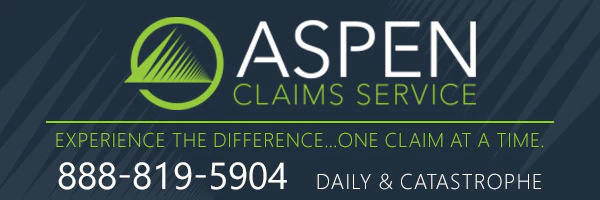
Recognizing Common Fraud Schemes in Insurance Claims
Monday, September 30th, 2024 Claims Pages Staff Proactive Fraud Detection Strategies for Claims AdjustersInsurance fraud is an ongoing challenge in the industry, costing billions of dollars annually. While fraud schemes evolve with new technologies and tactics, many of the most common patterns remain consistent. Recognizing these schemes early in the claims process can prevent fraudulent activity from progressing, protecting both insurers and honest policyholders. This article outlines the most frequently encountered fraud tactics and provides claims adjusters with practical strategies for spotting red flags before they escalate into full-blown cases of fraud.
The Financial Impact of Fraud
Insurance fraud comes with a significant financial burden. According to the FBI, insurance fraud costs the industry over $40 billion annually, impacting everything from premiums to operational costs. While small-scale fraud, like falsified personal injury claims, can seem insignificant on the surface, the cumulative effect is staggering. Larger, more sophisticated fraud operations—such as staged accidents or falsified catastrophic damage claims—can result in even greater financial loss.
For claims adjusters, the ability to spot fraud early on can prevent these financial losses and avoid unnecessary investigations that strain resources. So, how can adjusters recognize fraud before it's too late? It starts with knowing the red flags and common fraud schemes that exist in today’s landscape.
Common Insurance Fraud Schemes
1. Falsified Injury Claims
One of the most frequent types of insurance fraud involves individuals exaggerating or outright fabricating injuries. Claims adjusters are often faced with soft tissue injuries, which are harder to medically disprove, leading fraudsters to exploit them. In some cases, individuals may stage minor accidents and claim severe injuries to receive compensation.
Red Flags: Claims with exaggerated injuries that don't align with the reported accident details, discrepancies between medical reports and the severity of the injury, or individuals visiting multiple doctors for the same injury (a tactic called “doctor shopping”). Adjusters should be skeptical of inconsistent medical records or when a claimant refuses independent medical evaluations.
2. Staged Auto Accidents
Staged auto accidents are a particularly challenging type of fraud to detect. These incidents often involve multiple accomplices who coordinate a minor fender-bender or a deliberate rear-end collision. The goal is to file inflated claims for vehicle damage, injuries, or both. Staged accidents can also lead to larger criminal enterprises, involving car repair shops and legal professionals who help exaggerate claims.
Red Flags: Claims involving vehicles that show little to no actual damage despite claims of major repairs, inconsistencies in witness statements, or multiple claims submitted by the same group of individuals. Adjusters should also be wary of claimants with a history of frequent or suspicious claims.
3. Property Damage Exaggeration
Property damage fraud often arises after natural disasters or major accidents. While the damage may be legitimate, fraudsters will sometimes overstate the extent of the damage or claim additional items were damaged that weren’t part of the original event. This is especially prevalent in disaster relief claims, where fraudulent contractors and dishonest policyholders take advantage of insurers by inflating repair costs or faking losses.
Red Flags: Claims for excessive or unnecessary repairs, especially when there is minimal documentation or suspicious contractors involved. Adjusters should also watch out for claimants adding unrelated damage to legitimate claims, such as claiming for previous issues that predate the incident.
4. Arson for Profit
In arson-for-profit schemes, a business or homeowner intentionally sets a fire to claim insurance money, often due to financial hardship. These cases are particularly dangerous and costly, requiring extensive investigations. Fraudsters may attempt to make the fire appear accidental or result from an external source to avoid suspicion.
Red Flags: Fire claims from businesses or individuals facing financial difficulties, or fires that occur shortly after a significant increase in insurance coverage. Unclear causes of the fire or evidence that suggests tampering with safety systems, such as disabled sprinklers or blocked exits, are also concerning indicators.
5. Ghost Policies
Ghost policies involve individuals or businesses fraudulently obtaining insurance policies for non-existent people or properties. Once the policy is in place, they file claims on behalf of these “ghosts,” siphoning off money from the insurer. This type of fraud is more common in worker’s compensation or life insurance, where the fraudulent policyholder pretends an injury or death occurred to a fake employee or person.
Red Flags: Claims filed for individuals who cannot be properly verified through identification or employment records. Adjusters should ensure that thorough background checks are conducted when such claims arise and remain cautious of discrepancies in supporting documentation.
How Adjusters Can Proactively Spot Fraud
To prevent fraud from progressing, claims adjusters need to adopt a proactive and vigilant approach. Here are several practical steps adjusters can take to recognize fraud early:
Thorough Investigations: Always gather as much evidence as possible, including police reports, medical records, witness statements, and any relevant documentation. Discrepancies in these reports often point to fraudulent activity.
Data Analytics Tools: Utilize data analytics to detect patterns or anomalies across multiple claims. Advanced analytics tools can flag suspicious behavior, such as frequent claims from the same individual, or identify trends in specific regions or industries.
Leverage Industry Networks: Collaborate with other insurers, industry experts, and law enforcement to share information about known fraudsters or suspicious activity. By keeping an open line of communication, adjusters can identify fraud rings and high-risk claimants more effectively.
Interview Techniques: Conduct thorough and detailed interviews with claimants, using open-ended questions to gauge their responses. Consistent or rehearsed answers are often a sign of fraud, whereas legitimate claimants will provide more nuanced and specific details.
Red Flag Checklists: Create and utilize red flag checklists for each type of claim. These checklists should contain common indicators of fraud that can be reviewed for every new claim submitted. Having this structured approach helps ensure no warning sign goes unnoticed.
Conclusion
Insurance fraud will always be an ongoing challenge for claims adjusters, but by recognizing the common schemes and red flags early on, adjusters can prevent fraudulent claims from advancing. Staying vigilant and leveraging technology and industry networks allows adjusters to protect both their company’s financial interests and the integrity of the claims process. With a proactive approach, adjusters can stay one step ahead of fraudsters and ensure that fraudulent activity is caught before it causes serious harm.
Fraud detection is an ongoing battle in the insurance industry, but with the right strategies, claims adjusters can significantly reduce the risks. Our series, "Proactive Fraud Detection Strategies for Claims Adjusters," is packed with expert advice and practical tools to help you stay ahead. From understanding common fraud schemes to utilizing the latest technology, our series will empower you to improve your fraud detection capabilities and ensure your claims process is both secure and efficient.

